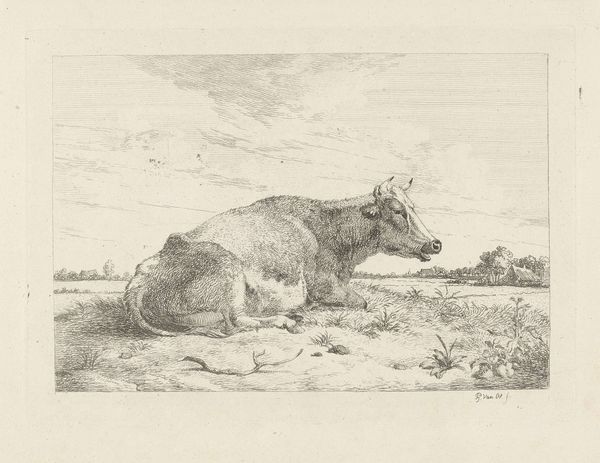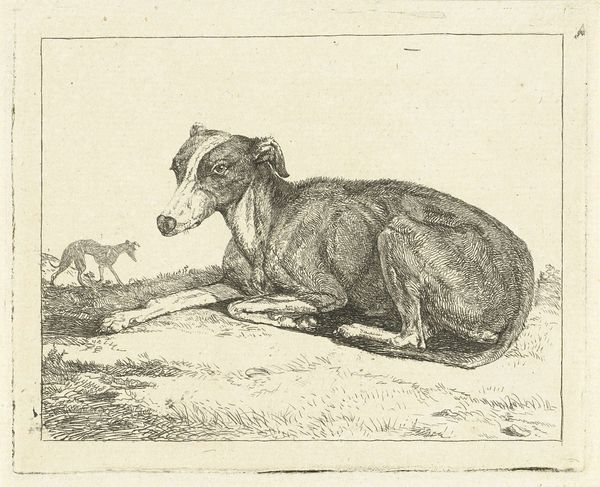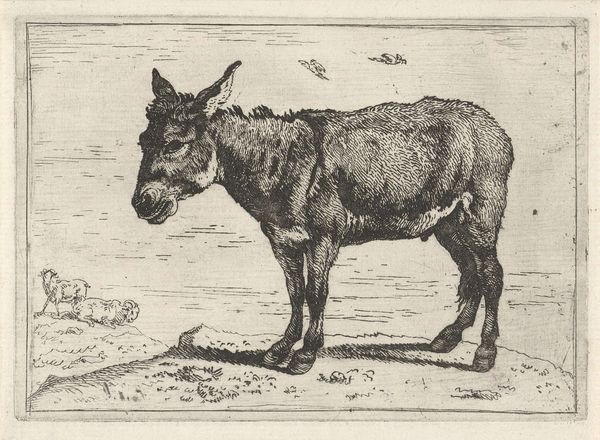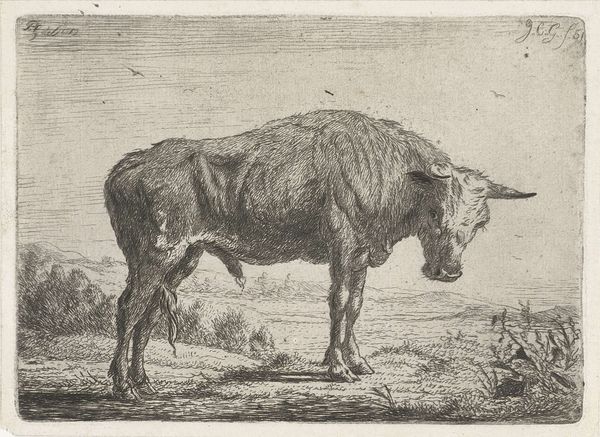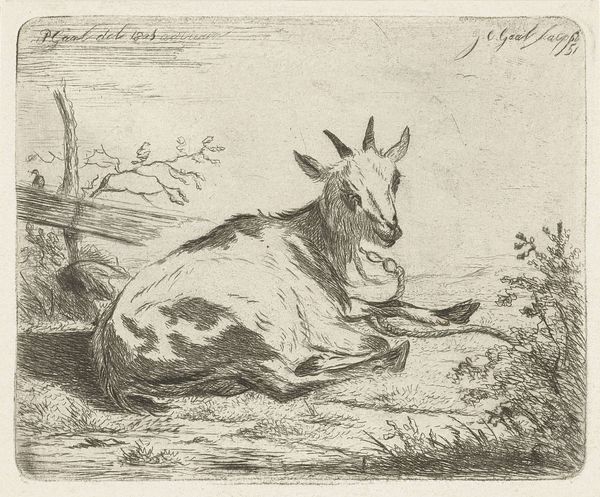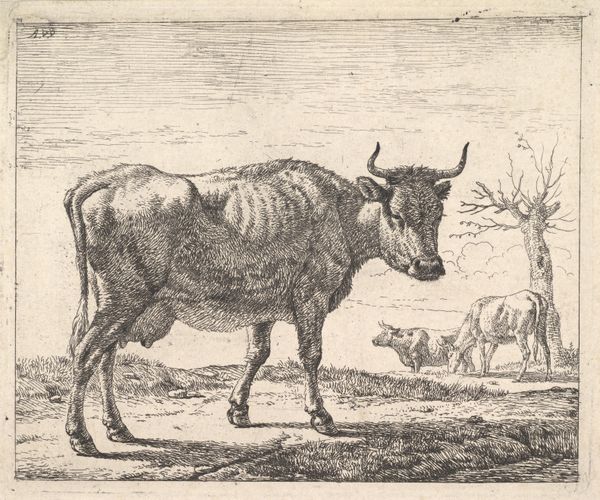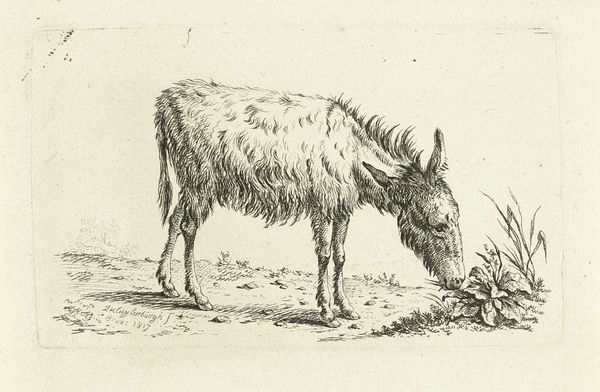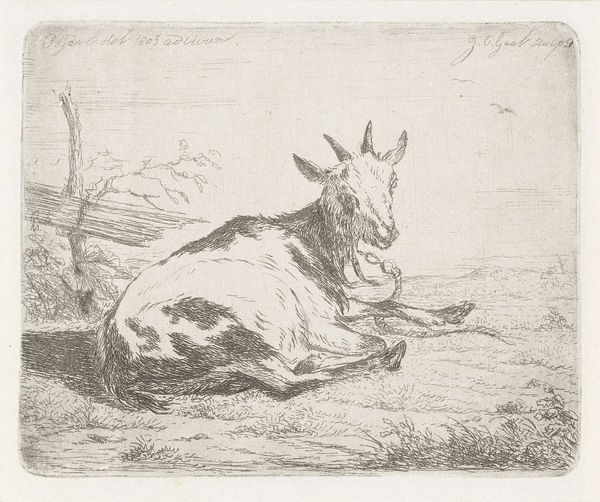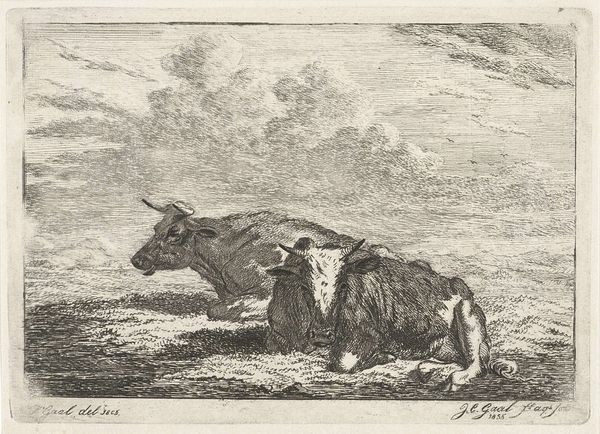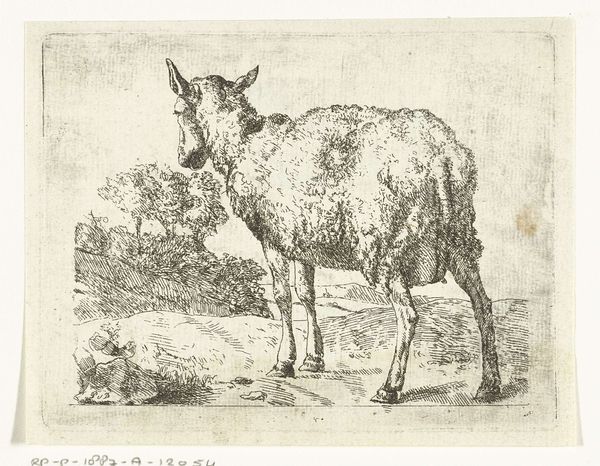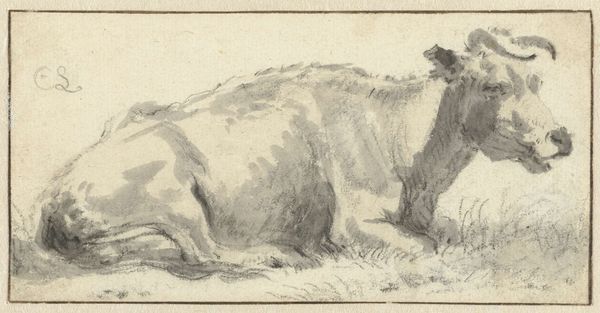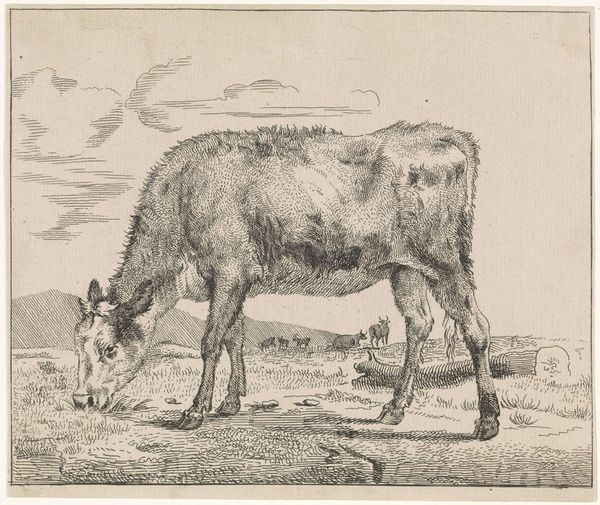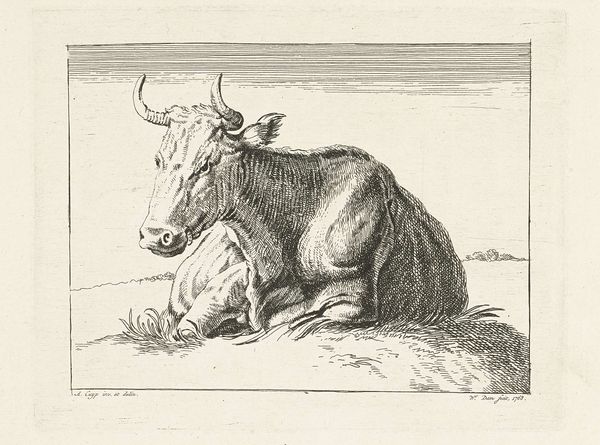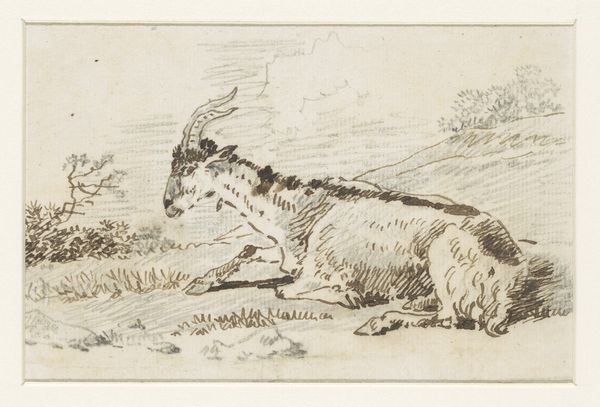
drawing, print, etching
#
drawing
#
animal
# print
#
etching
#
landscape
#
figuration
#
realism
Dimensions: height 65 mm, width 90 mm
Copyright: Rijks Museum: Open Domain
Curator: Standing before us, we have "Liggende koe", or "Lying Cow", an etching and print completed around 1851 by Jacobus Cornelis Gaal. It resides here at the Rijksmuseum. Editor: What a wonderfully serene image. It strikes me with its quiet stillness, that reclining form feels so substantial and present within the landscape, despite the muted palette. Curator: Indeed. Look at the exquisite cross-hatching used to delineate the form of the cow; observe how that meticulous technique provides dimension. Also, note the texture within the foreground, in direct opposition to the smooth gradation above it. Editor: The cow certainly seems to command the space here, doesn’t it? For centuries, the cow has acted as a vessel of nurturance and provision, becoming emblematic of fertility. Consider the ancient mother goddess figures, symbolized through bovine iconography... It asks us, what might the deeper symbolic weight of this single animal represent? Curator: I am drawn back to the visual and material components themselves. Observe how Gaal juxtaposes linear precision with atmospheric vagueness to produce this print; note how this piece reflects a specific trend toward realism present at this moment. How each discrete mark functions as a signifier that points to that greater trend and form. Editor: Don't you find the vulnerability striking? It suggests not only nourishment but perhaps even passive acceptance of fate—an emblem of sacrifice inherent in the role the animal holds. This image acts as an earthly anchor for broader themes that ripple across cultural consciousness. Curator: I am glad to consider these interpretations. But I maintain that without attention to its intrinsic, visual, and material properties, such semiotic explorations remain untethered, losing sight of how forms themselves inform meanings. Editor: Perhaps it’s through both avenues—a dialogue between the structure and the sign—that artworks like Gaal's reveal their potency, connecting both the visible and the symbolic. Curator: Well said. And so we invite you to reflect on these dual perspectives and the artwork as a totality.
Comments
No comments
Be the first to comment and join the conversation on the ultimate creative platform.
